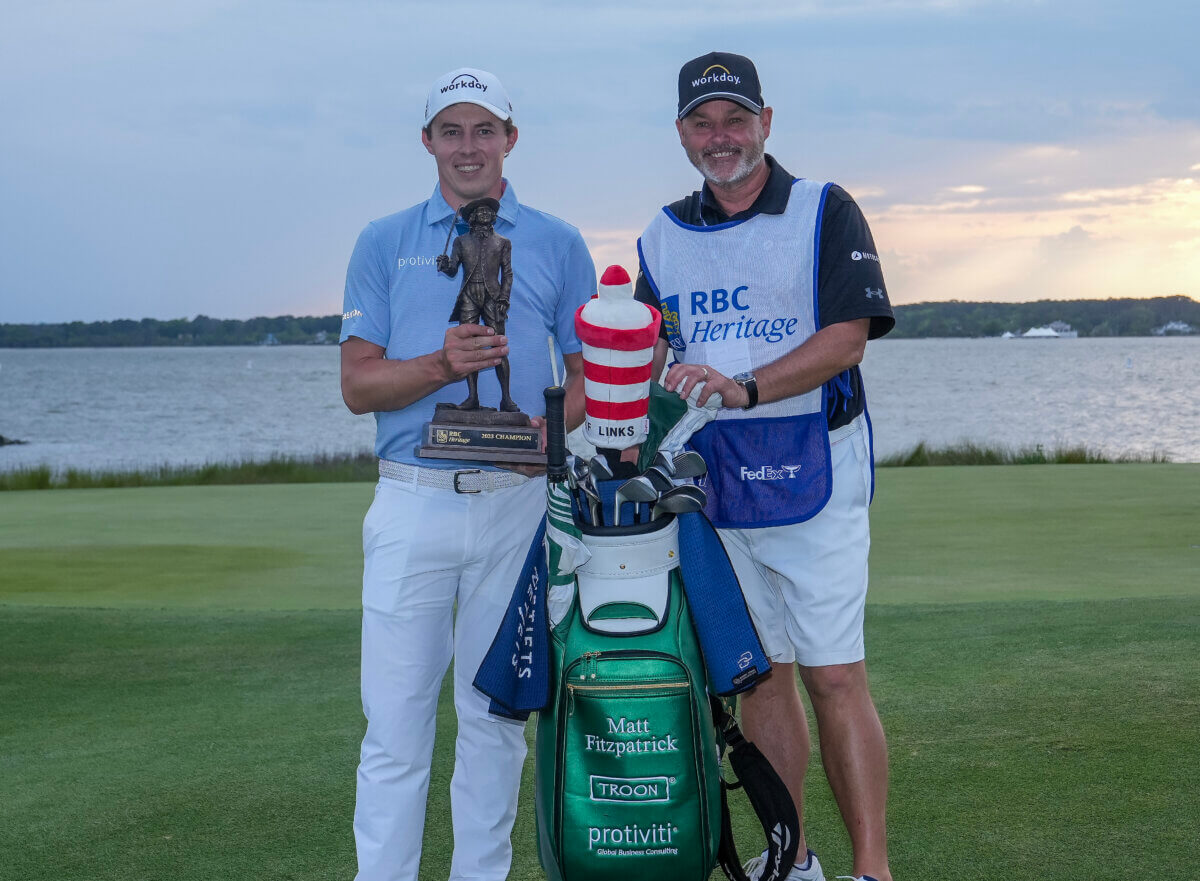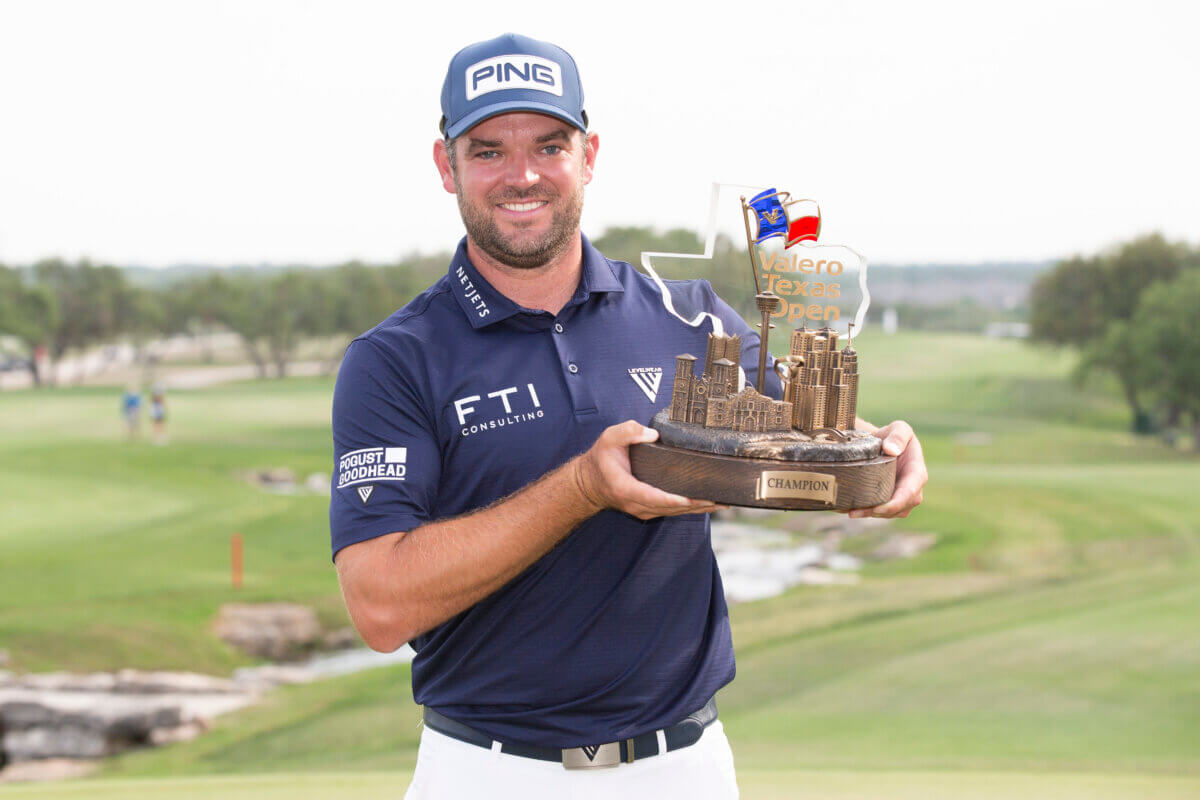Veteran caddies and two-time champ Davis Love III pinpoint the Players Championship’s big tests
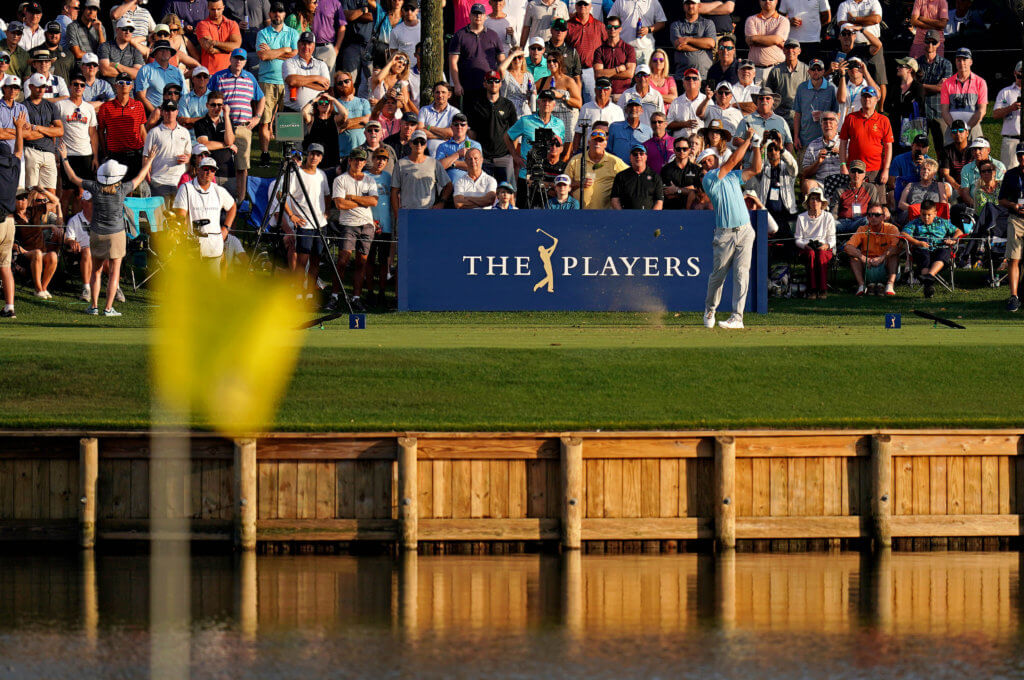
It’s Players Championship week. There’s so much drama in its many TV commercials and we’re all reminded of TPC Sawgrass’ unmistakably exciting finishing three holes every year.
But this week, for veteran caddies and players, brings its own set of challenges.
Those mostly begin with the late Pete Dye’s intriguing design of the Tour’s flagship course.
“With Pete Dye courses (like Sawgrass), he tries to trick you mentally and visually,” caddie John Davenport (Scott Brown’s caddie) says. “You see the trouble, so you think you have to play away from it.”
Prime example? How about the very first tee shot.
READ: Rory McIlroy’s caddie Harry Diamond reflects on 2019 Players Championship win
“You see the fairway bunker on one to the right, so you think you have to play away from it,” Davenport said. “But in hindsight, you need to challenge it so you get a better angle to the green. And even if (your drive) goes in the bunker, you’ve got a straight shot and a better chance of getting it to the flag, whereas if you miss your tee shot way left there then you’re just playing to get it around the front and try to make par that way.”
For a multiple Players Champion like Davis Love III (1992 & 2003), who won each of his titles by at least four shots, Sawgrass’ visual intimidation comes into play.
“You can’t try and force shots there,” Love said. “You’ve got to drive it in the right place in the fairways, not necessarily in the fairway. It’s like on 18, the closer you get to the water the better angle you have into the green. Then also if you hit it too close to some greens you don’t have a shot at getting (your approach) really close. It’s all about playing the angles. It’s a course where the caddie and players really need to study the yardage book.”
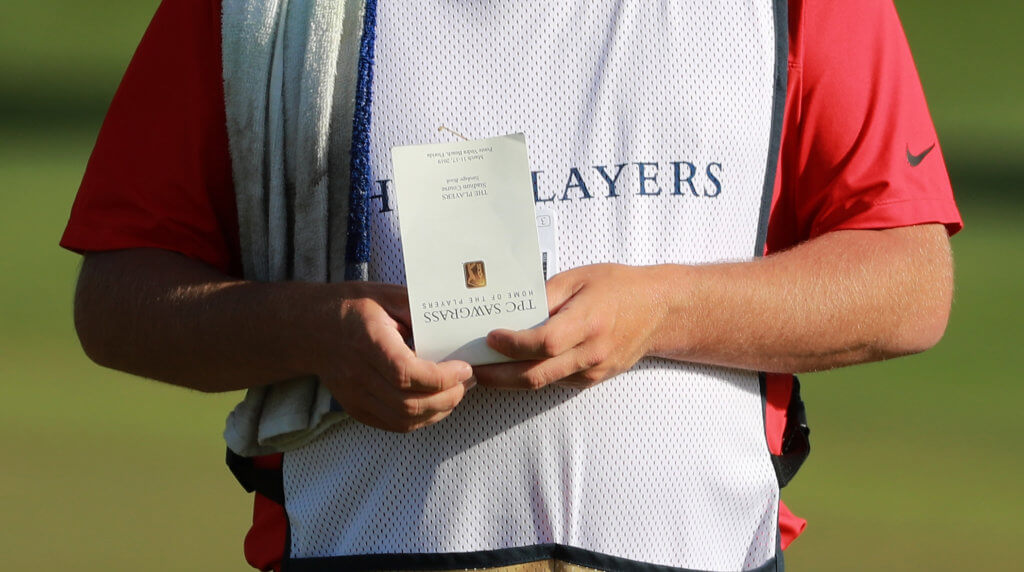
Brian Smith (Smitty) has looped in 25 past Players Championships and returns this time in his third week working for Zach Johnson. The veteran caddie sees course management and the yardage book as big keys, but they’re not everything at TPC Sawgrass’ Stadium Course.
“You’ve just got to pay close attention to your course management,” Smith says. “I don’t envy rookie caddies at that course. It just plays different than in the air. If it’s dry like Bay Hill was last week then a lot more things factor in.”
Like with any course, caddies need to be aware of where the good and bad misses are at Sawgrass.
“You really need to know where your misses should be,” Smith says. “Sometimes you need to favor one side of the fairway over the other on some of the wedge shots just because if you have the wrong angle it’s a very difficult shot.”
Speaking of wedge shots and shorter approaches, the water protected fourth hole offers players a shorter approach — but that doesn’t mean they should always take it says long-time Tour looper Chad Reynolds.
“If you miss the fairway there just lay it up,” Reynolds says of the tricky 384-yard hole.
With rough-covered knolls to the left and a deep fairway bunker right, there’s certainly a lot of danger that gets compounded when you’re coming into the well protected two-tiered green.
“Guys miss the cut or lose the tournament there or just because it’s such a hard hole. It’s a good hole, but you have to stay out of the water (in front of the green) there.”
Another hole where you have to stay out of the water at all costs is the signature par-3 17th.
For a caddie and player team, you’ve got to be on the same page as you take it on during the pressure of the tournament.
“When I worked for Vijay Singh we only wanted to go with one number on 17,” Reynolds said. “Usually you have a front number, a number to the pin, or the carry distance. We wanted one number and that was it. If it was 11 into the green, that’s all he wanted to know. So if it was 130 front then I’d tell him ‘141’ and that would be it. That was the only number he wanted to hear because that’s the only place you’re trying to hit it.”
For Ben An’s caddie Daniel Parratt, 17’s short length and the uncertainty from the wind combine to make it a good test.
“I think it’s a great hole because you have those shorter clubs in and you have a higher ball flight, so it makes it more interesting sending shots higher into the winds,” Parratt said.
Familiarity with your player is key on 17 tee, according to Reynolds.
“You better know your guy, and his preferred ball flight. Everybody is going to want something different,” Reynolds says. “When it gets blustery, heck I’ve even seen 7-iron on that hole.”
For players on 17 tee, do the jitters ever leave?
“No,” Love says, “because there’s no way out. It’s not like, ‘OK, I’m nervous and it’s windy so I’m going to bail out.’ You’ve got to hit it.”
For a player and a caddie it’s one of those holes that can stick in the back of your mind, even before you get there.
“You definitely think about 17 all day if it’s windy,” Jeff Willett (Nick Taylor’s caddie) said. “That long walk from 16 to 17, a lot can happen there. My whole goal is to not have my player embarrassed there.”
Xander Schauffele has only played in two Players, but he finished T2 right off the bat in 2018. His caddie Austin Kaiser also sees how No. 17 can easily sneak into many minds of those inside the ropes that week.
“I think all these guys are thinking about 17 before they’re even on 13,” Kaiser said. “It’s always lingering in the back of your head.
“But that back nine, it’s built for drama coming down the stretch. That stretch of 14 and 15 you’ve got to play those holes in even, so then you don’t feel like you need to attack on 16, 17, 18. Eighteen is obviously the hardest hole on the golf course.”
As much as certain holes get players and caddies thinking hard, what factor of Players week presents the biggest challenge?
“The wind has everything to do with it,” Smith says. “And as gusty as it’s been so far this Florida swing, that’s what makes it very difficult because you get a lot of crosswinds, even into the wind shots.”
Each approach shot asks for a solid game plan. Smith knows that and in those previous 25 Players has worked with the likes of John Huston, Brad Faxon, Justin Leonard, Harris English and Kyle Reifers.
“A lot of the shots into the greens are tough because the greens are small,” Smith says. “That and there’s a lot of water around a lot of the greens, so you’ve got to be really careful not to short-side yourself there. But some of those pins, you’ve got to take some of them on.”
Kaiser agrees with taking on some, but urges caddies to know which ones as they look at the hole locations each morning.
“You’ve definitely got to pick your spots based on pins,” Kaiser said. “The greens at Sawgrass are not that big and you know there are some shelves that you’ve got to hit it on. It’s about picking your holes to attack before you even go out to play. You also have to pick your spots because there’s like four or five holes out there where even if you have a perfect number, you can’t really attack them. The biggest thing is knowing when to attack. You’ve got to hit fairways out there, but if you’re not in the fairway you’re not attacking.”
And attacking and picking your spots doesn’t mean you always go for every par 5. Love won this event twice by four and six shots, and he cautions going for some greens in two.
“Sometimes Pete tempts you to go at 11, but you don’t need to go there, you’d better lay up. So it’s just about learning there. That’s why places like that and the Masters are special. It takes a little bit of experience to learn your way around.”
Getting over the intimidation Sawgrass presents is one of the biggest keys, according to Love.
“Getting comfortable at TPC Sawgrass is hard, unless you play it a lot it’s intimidating. It’s definitely visually intimidating but if you play it right, you can play it well,” Love says.
MORE: All the holes in one on the par-3 17th at TPC Sawgrass during the Players Championship
The change on the calendar from May back to March causes caddies and players to adjust, as the course often plays much softer.
“It’s a huge change with the move back to March because the golf course plays so much longer because it’s wetter and colder,” Reynolds said. “You’re hitting a lot of different clubs than you were in previous years.”
For Davenport, who just returned to Sawgrass on Monday for the first time since he last looped there in 2018, it figures to be a stark contrast. In fact, his first Players appearance as a caddie was in 2012 when he used to work for Brian Harman (2007 was the initial move from March to May). So Davenport has never seen Sawgrass in March tournament conditions.
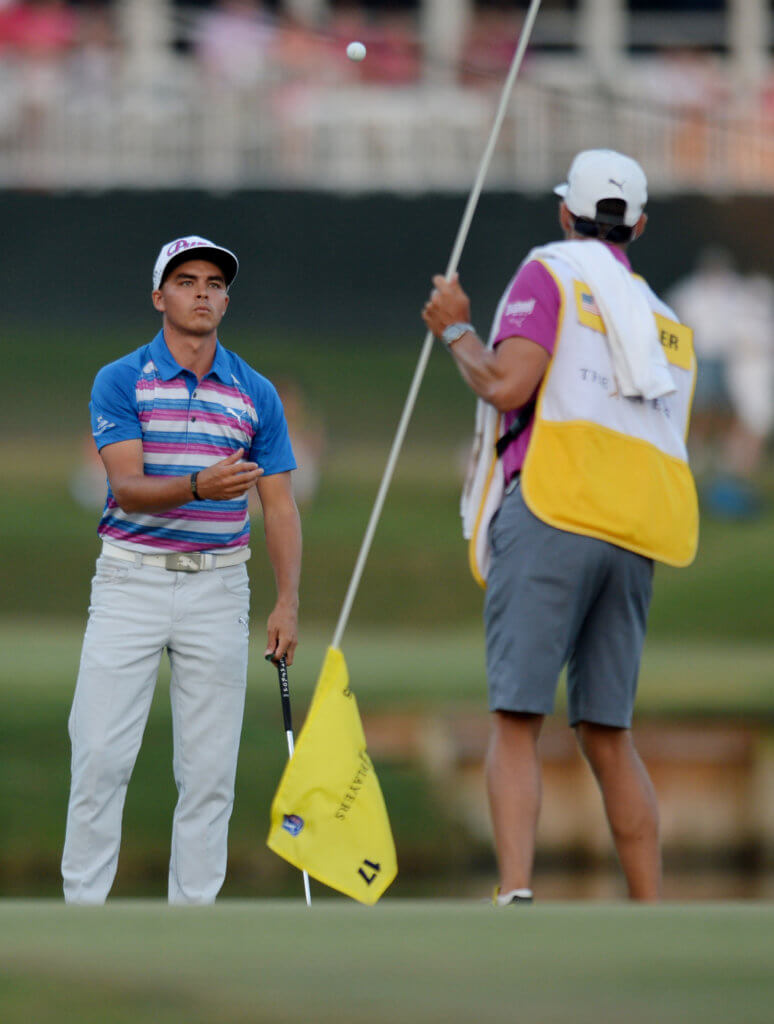
“It’s going to be totally different for me this year,” Davenport says. “Everything is going to be over-seeded compared to two years ago when I was last there.”
In unison with the calendar change, the weather helps influence course conditions that week, understandably, as well. For example, this week it’s supposed to be in the 70s all tournament.
“Course conditions change fast or soft depending on the particular year for sure,” Kenny Harms, caddie for Kevin Na, said.
The biggest golf course changes he’s learned to adapt to over the years was when the Tour turned the par-4 12th hole into a drive-able par 4 a couple years back. “That’s something you have to learn to know the more you play it,” Harms said.
Though the Players is not considered a major, some caddies have seen their player’s treat it on the same level.
“Guys sure act like it’s a major,” Reynolds said. “When I looped for Tom Pernice, Vijay Singh and Nick Watney. Man, Nick he used to get really jacked up.”
Watney and Reynolds came agonizingly close to winning at Sawgrass in 2011. They slept Saturday night with a share of the early third-round lead with Graeme McDowell during that rain-soaked Players.
“The big thing about Sawgrass is you never know what you’re going to shoot until you walk off the 18th green,” McDowell’s caddie Ken Comboy said. “You can be having a great day through 15 and you can walk off with disaster.”
McDowell and Comboy’s experience in the 2011 Players epitomizes this point. McDowell held a three-shot lead late in the third round (early Sunday morning) sitting on a sizzling 6 under and bogey-free round through 17. McDowell, coming off a birdie on 17, drew an approach on 18 which landed short and rolled all the way across the green and into the water, leaving him with a double and a one-shot lead for the final round later that day.
McDowell went on to shoot 7-over 79 and fell from first to T33.
Heartbreaking to say the least.
The Players week is set up for drama and the signature three-hole finish seems to always produce some late action.
“The reverse of disaster is also true (at TPC), you can be struggling then have a great finish,” Comboy said.
Like Rickie Fowler’s late birdie barrage in 2015, which got him into a playoff and where he ultimately made three birdies on 17 to win the title.
“I know a lot of people put extra emphasis on it because it’s the Players Championship, but your player is still hitting shots and it’s still you against the golf course,” Harms cautions.
We’ll soon see which player and caddie combo handle it best this week.




